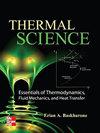Does agricultural productive service promote agro-ecological efficiency? Evidence from China
IF 1.1
4区 工程技术
Q4 THERMODYNAMICS
引用次数: 0
Abstract
Given the background of the rural population ageing, the reduced agricultural non-point source pollution and the decreased agricultural carbon emission, agricultural producer services, as an important bridge between small farmers and modern agriculture, are an important path to ensure food security and the green development of agriculture. Based on panel data of 31 provinces in China from 2003 to 2020, this paper uses Slack-based measure model with undesirable outputs (SBM-undesirable model)to calculate the agricultural ecological efficiency of 31 provinces. Furthermore, the two-stage least squares, the panel threshold model and the spatial Durbin model are used to empirically analyze the influence mechanism and the spatial spillover effect of agricultural productive services on agricultural ecological efficiency. The results show that agricultural producer services have a significant non-linear impact on agricultural ecological efficiency. Rural residents' income and per capita cultivated land area can adjust the relationship between them. The two main ways for agricultural productive services to improve agricultural ecological efficiency are as follows: reducing undesirable outputs such as pesticides, chemical fertilizers and plastic sheeting for agricultural use and improving agricultural production efficiency. In addition, agricultural producer services have a significant positive spatial spillover effect on agricultural ecological efficiency, and the indirect impact elasticity of spatial spillover is higher than the direct impact elasticity. Therefore, to achieve food security and promote the sustainable development of agriculture, it is necessary to vigorously develop agricultural productive ser-vices through multiparty cooperation.农业生产性服务促进农业生态效率吗?来自中国的证据
在农村人口老龄化、农业面源污染减少、农业碳排放减少的背景下,农业生产者服务业作为连接小农与现代农业的重要桥梁,是保障粮食安全和农业绿色发展的重要途径。基于2003 - 2020年中国31个省区的面板数据,采用基于slack的不期望产出测度模型(sbm -不期望模型)对31个省区的农业生态效率进行了计算。利用两阶段最小二乘法、面板阈值模型和空间Durbin模型实证分析了农业生产性服务业对农业生态效率的影响机制和空间溢出效应。结果表明,农业生产者服务业对农业生态效率具有显著的非线性影响。农村居民收入与人均耕地面积可以调节二者之间的关系。农业生产性服务业提高农业生态效率的途径主要有两种:减少农用农药、化肥、地膜等不良产出,提高农业生产效率。此外,农业生产性服务业对农业生态效率具有显著的正向空间溢出效应,且空间溢出的间接影响弹性高于直接影响弹性。因此,要实现粮食安全,促进农业可持续发展,必须通过多方合作,大力发展农业生产性服务业。
本文章由计算机程序翻译,如有差异,请以英文原文为准。
求助全文
约1分钟内获得全文
求助全文
来源期刊

Thermal Science
工程技术-热力学
CiteScore
2.70
自引率
29.40%
发文量
399
审稿时长
5 months
期刊介绍:
The main aims of Thermal Science
to publish papers giving results of the fundamental and applied research in different, but closely connected fields:
fluid mechanics (mainly turbulent flows), heat transfer, mass transfer, combustion and chemical processes
in single, and specifically in multi-phase and multi-component flows
in high-temperature chemically reacting flows
processes present in thermal engineering, energy generating or consuming equipment, process and chemical engineering equipment and devices, ecological engineering,
The important characteristic of the journal is the orientation to the fundamental results of the investigations of different physical and chemical processes, always jointly present in real conditions, and their mutual influence. To publish papers written by experts from different fields: mechanical engineering, chemical engineering, fluid dynamics, thermodynamics and related fields. To inform international scientific community about the recent, and most prominent fundamental results achieved in the South-East European region, and particularly in Serbia, and - vice versa - to inform the scientific community from South-East European Region about recent fundamental and applied scientific achievements in developed countries, serving as a basis for technology development. To achieve international standards of the published papers, by the engagement of experts from different countries in the International Advisory board.
 求助内容:
求助内容: 应助结果提醒方式:
应助结果提醒方式:


